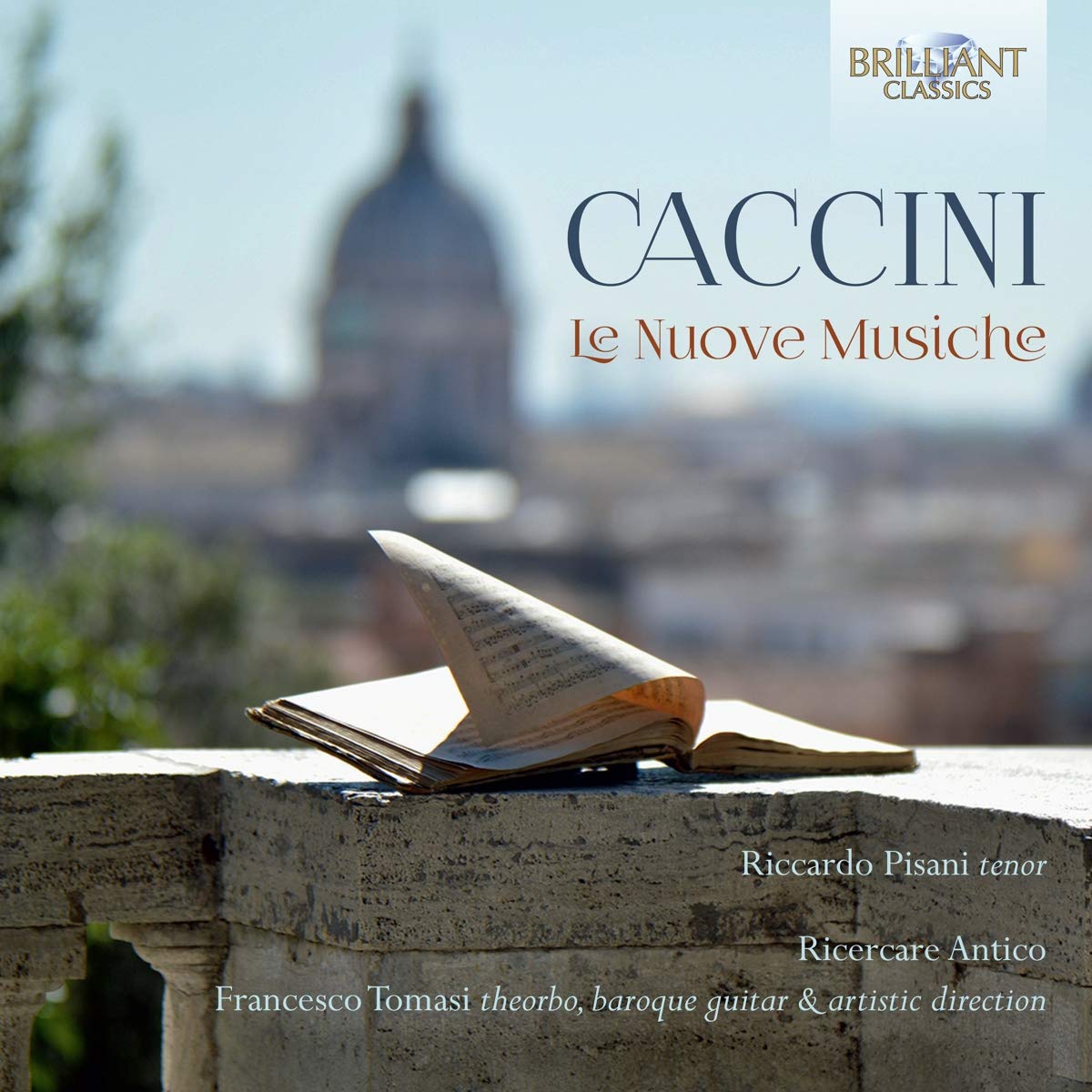Riccardo Pisani tenor, Ricercare Antico
66:41
Brilliant Classics 95794
Giulio Caccini’s Le Nuove Musiche, the first volume of which appeared in 1602, is for the most part better known by name than in performance. As every student of music history knows, it is a collection of solo songs composed over some two decades. It owes its name and existence to the experimentation and theories of the Count Bardi’s Florentine Camerata, an academic gathering of which Caccini was a member. Although not quite as ground-breaking as its composer suggested, this ‘new music’ played a fundamental role in the birth of a form that emerged at much the same time as publication of Le Nuove Musiche and which to this day plays a major role in musical life – opera.
Presciently, as if its author was unconsciously aware of its epoch-making importance, the volume was preceded by a lengthy forward that is part manifesto, part singing tutor that is essential study for any singer aspiring to sing the vocal music of the 17th century. Basically the songs fall into one of two forms: strophic songs with a number of verses, often punctuated by an intervening ritornello, and freer structures, sometimes in several sections responding to the verse. The former are generally of a lighter character, often dance-like and incorporating hemiola (syncopated) rhythms – what Caccini terms ‘airy musics’ – while the latter are used for more serious topics. Anyone familiar with Monteverdi’s Orfeo will realise that it includes examples of both.
Caccini’s prime prerequisites for the performance of these songs are recognition of the importance of the text and its communication to the listener. In the Preface he lays stress on realising the emotions, which may change rapidly and which, in Caccini’s words, require an ‘increasing and abating’ of the voice. He also has much to say on ornamentation, in particular the trill, repeated note decoration, and gruppo, which more closely resembles the later Baroque trill.
So how do these performances by the Italian tenor Riccardo Pisani measure up to such tutoring? Not too well, I’m afraid. On the credit side he has obviously taken the trouble to think about the text, while he also articulates and projects words well. But though the voice itself is agreeable enough it lacks the colour and personality to make enough of this music, even the most famous of the songs, ‘Amarilli’ failing to beguile as it should. In short, there is little in the way of responding to Caccini’s ‘increasing and abating’ of the voice. Technically, too, although Pisani shows a reasonable grasp of the style, the voice is not always evenly produced, there is a surfeit of vibrato and the singer’s handling of those all-important ornaments lacks confidence. Too often the need for decoration is passed over and embellishment that is attempted often sounds sketchy. It is sobering to recall that Nigel Rogers was singing this kind of repertoire with far greater style and grasp of the correct ornamentation nearly 50 years ago. Pisani is not helped by the over- elaborate and at times intrusive continuo contribution of Ricercare Antico (violin, harp, archlute and theorbo, violone and (sigh) Baroque guitar), who also intersperse rather more satisfying instrumental performances of items by Filippo Nicoletti, Frescobaldi and Stefano Landi, the last named rather curiously described in the notes as ‘a specialist in instrumental music’.
As is customary with Brilliant Classics you will have to go their website for the Italian/English texts, but be warned that if you print them off (as I did) you will get some odd spacing results.
Brian Robins
